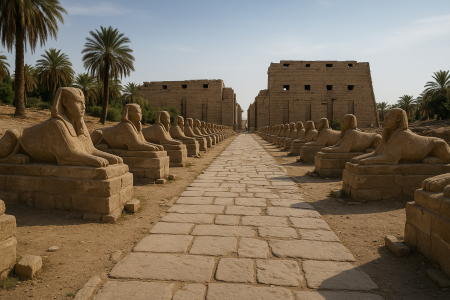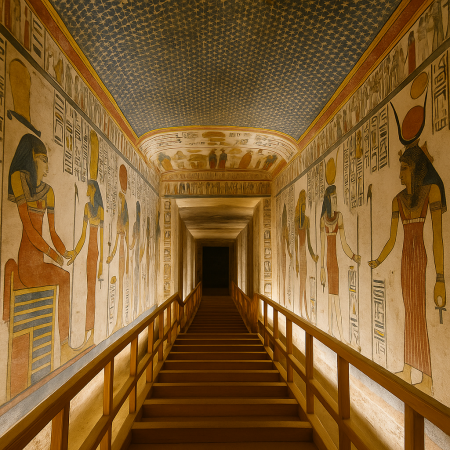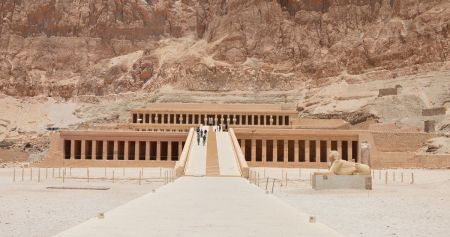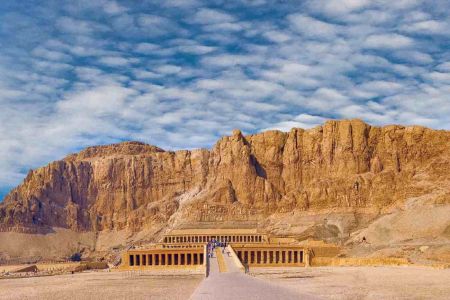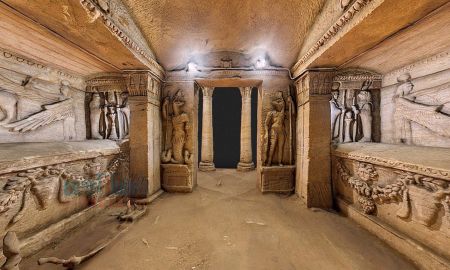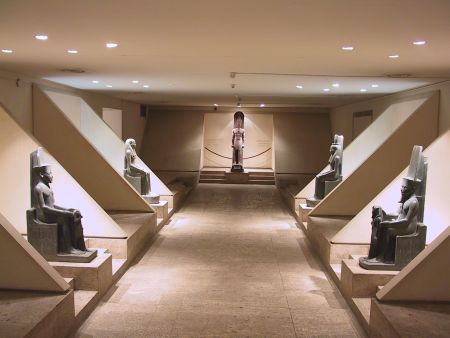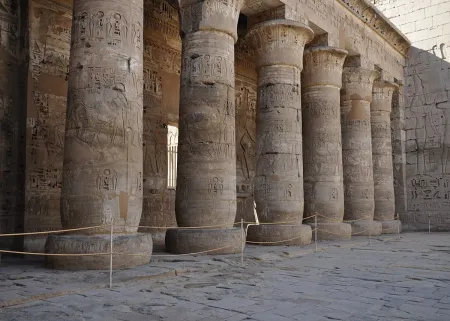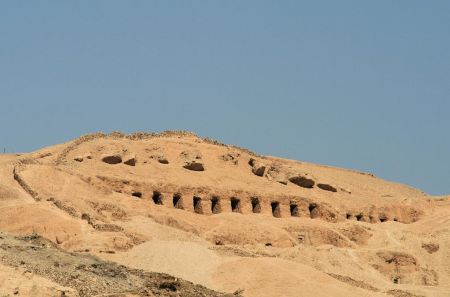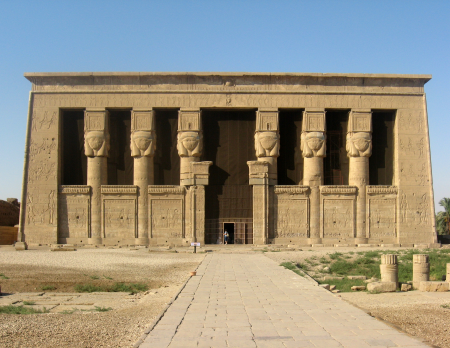Luxor Temple : The Heartbeat of Ancient Thebes

In the heart of modern-day Luxor, nestled along the eastern bank of the Nile, stands the majestic Luxor Temple, one of the most captivating relics of ancient Egypt. Unlike many temples built solely to honor gods, Luxor Temple was constructed to celebrate royal power, divine birth, and the living pharaoh’s connection with the gods. This 3,400-year-old sanctuary once formed the sacred nucleus of Thebes, the ancient capital of Egypt during the New Kingdom.
Built primarily under Amenhotep III and later expanded by Tutankhamun, Horemheb, and Ramses II, the temple wasn't just an architectural marvel—it was the spiritual stage for the Opet Festival, a grand religious procession linking Luxor Temple with the Karnak Temple complex via the Avenue of Sphinxes. This wasn't a temple frozen in time but one that lived, breathed, and evolved through dynasties, religions, and empires.
Even today, Luxor Temple pulses with energy. Illuminated at night, with colossal statues casting long shadows across the ancient stones, the site evokes a mystical beauty that few places on Earth can match. It's not just a ruin—it's a revelation. A journey to Luxor Temple is a journey into the beating heart of Egyptian cosmology, politics, and faith.
Historical Background of Luxor Temple
Foundation by Amenhotep III: A Temple for the Living King
The construction of Luxor Temple began around 1400 BCE under the reign of Amenhotep III. Unlike other temples, which focused primarily on funerary rites or veneration of multiple deities, this temple was uniquely designed to honor Amun-Ra, the king of the gods, and the divine nature of kingship itself. It celebrated the moment the pharaoh was spiritually reborn and reaffirmed as the earthly embodiment of Amun during the annual Opet Festival.
Ramses II’s Contributions: Monuments to Might
A century later, Ramses II, Egypt’s most prolific builder, added a grand pylon, six massive statues of himself, and two towering obelisks—only one of which remains today, the other now stands in Place de la Concorde in Paris. These additions amplified the temple’s grandeur, reinforcing his divine legitimacy and aligning himself with earlier kings.
Later Additions: A Temple that Bridged Faiths
Luxor Temple was never static. Alexander the Great added a chapel, Roman emperors built sanctuaries, and early Christians converted sections into churches. Even a mosque, the Abu al-Haggag Mosque, still operates within the temple grounds—making Luxor Temple one of the few places in the world where layers of ancient Egyptian, Greco-Roman, Christian, and Islamic heritage coexist in a single sacred space.
Architectural Features of Luxor Temple
Grand Pylon and Colossi: Ramses II’s Stone Legacy
The first thing visitors encounter is the monumental pylon, flanked by towering seated statues of Ramses II and the remaining obelisk, a stunning piece of pink granite over 25 meters high. These elements once framed the entrance to the sacred temple, projecting power to all who approached from the Nile or the Avenue of Sphinxes.
The Peristyle Courtyard and Colonnade
Past the pylon, visitors enter the Peristyle Court of Ramses II, surrounded by double rows of papyrus-headed columns. Beyond that lies the Colonnade of Amenhotep III, an elegant processional hall lined with 14 massive columns, each soaring over 16 meters. Detailed reliefs on the walls depict the Opet Festival, showing the pharaoh being crowned by the gods—one of the most significant rituals of kingship.
Inner Sanctum and Holy of Holies
Deeper into the temple lies the Sanctuary of Amun, where the sacred barque (boat) of the god would have rested. This holy chamber was the spiritual heart of the temple, accessible only to priests and the king. The tight, dark spaces contrast with the open courtyards, symbolizing the divine mystery at the core of Egyptian religious practice.
Luxor Temple and the Opet Festival
A Royal Procession of Rebirth and Renewal
The Opet Festival was one of the most important religious events in ancient Egypt. Each year, the sacred statues of Amun, Mut, and Khonsu were carried in ceremonial boats from Karnak to Luxor Temple. This procession, lasting several days, represented the pharaoh’s divine rebirth and solidified his right to rule.
The Avenue of Sphinxes: A Sacred Path Reborn
Stretching nearly 3 km, the Avenue of Sphinxes connects Luxor Temple to Karnak Temple. Lined with hundreds of ram-headed and human-headed sphinxes, the avenue was recently restored and reopened to the public, allowing visitors to walk the same path once reserved for gods and kings.
Travel at your own pace with Egypt Private Tours
Religious Transformations Through the Ages
From Egyptian Temple to Christian Church
In the early Christian era, parts of Luxor Temple were converted into churches. Frescoes and cross-shaped carvings can still be seen overlaying the original pharaonic reliefs—visual proof of the site’s religious evolution.
Abu al-Haggag Mosque: A Living Faith Inside Ancient Walls
Built in the 13th century atop the temple ruins, the Abu al-Haggag Mosque is still active today. Its presence underscores how Luxor Temple, while ancient, remains embedded in the living spiritual fabric of Egypt.
Visiting Luxor Temple Today
Day or Night: Two Faces of the Temple
Luxor Temple can be visited both by day and night—and each offers a different magic. In daylight, the grandeur and detail of the architecture shine. At night, the temple is beautifully lit, casting dramatic shadows that bring the columns, statues, and reliefs to life in an entirely new way.
Best Time to Visit
October through April offers the most comfortable climate. Arriving early in the morning or after sunset avoids crowds and heat, giving you space to absorb the mysticism and grandeur of the site.
Tickets, Guides, and Accessibility
Entrance tickets are available on-site and often included in Luxor temple tour packages. English-speaking guides can be hired to deepen your understanding of the site's history, symbolism, and architecture. The temple is partially wheelchair accessible, though some areas remain uneven due to ancient foundations.
Frequently Asked Questions About Luxor Temple
What is Luxor Temple famous for?
Luxor Temple is renowned for its colossal architecture, religious significance, and its unique role in the Opet Festival, where the king’s divine status was renewed annually.
Who built Luxor Temple?
Primarily built by Amenhotep III and later expanded by Ramses II, Luxor Temple also contains additions by Tutankhamun, Alexander the Great, and various Roman emperors.
Is Luxor Temple part of Karnak Temple?
No. Although connected by the Avenue of Sphinxes, Luxor Temple is a distinct temple complex with its own unique purpose and design.
Why is one of Luxor Temple’s obelisks in Paris?
In 1833, Muhammad Ali Pasha gifted one of Ramses II’s obelisks to France. It now stands in Place de la Concorde as a symbol of Egyptian-French relations.
Can you visit Luxor Temple at night?
Yes, night visits are highly recommended. The temple is beautifully illuminated, offering a mystical atmosphere and excellent photo opportunities.
Conclusion: Luxor Temple—A Sacred Bridge Through Time
More than just a relic of ancient glory, Luxor Temple is a powerful symbol of continuity. It's a place where gods met kings, where processions celebrated life, and where stone, story, and spirit intertwined. From its glorious inception under Amenhotep III to its transformation under Christian and Islamic rule, Luxor Temple remains not only a marvel of architecture and design but also a living chronicle of human civilization. For anyone exploring Egypt, Luxor Temple is not just a must-see—it’s a must-feel.


